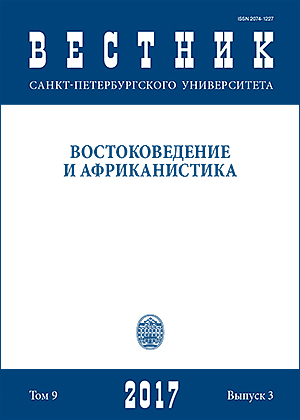Reconstruction of the Archaic version of the Sundanese Sang Kuriang folk-tale
DOI:
https://doi.org/10.21638/11701/spbu13.2017.309Abstract
The paper points out the well-known Sundanese cerita rakyat plot about Sang Kuriang, which has similar features with the myth and Ancient Greek tragedy “Oedipus the King” by Sophocles (the murder of the father and the desire of incest with the mother).
Most of the modern Indonesian versions of Sang Kuriang lost their essential plot sections, which are unable to be restored according to the modern story-telling of the said plot and literary fairy-tales for children.
Such texts reveal the degradation of archaic features in the structure of Sang Kuriang folk-tale. On the contrary, the modern Indonesian writers like Aijp Rosidi (born in 1938), have reconstructed the ancient roots of the folk-tale.
After comparing his work “Sang Kuriang is late” (“Sang Kuriang kesiangan”, 1960) with the versions for children and the contemporary storytelling practice of the same plot, its possible to rebuild the utmost archaic version, find out the lost motivations of the characters’ deeds in different interpretations of the same plot, and explain some unclear moments making use of Oedipus-studies, such as methods of psychoanalysis (Freud), cultural anthropology (Frazer, Girard) and folkloristics (Propp), as well as declare the place of “Sang Kuriang” in the genre-system of Indonesian folklore.
Keywords:
Indonesian folklore, cerita rakyat, Sundanese folklore, Sang Kuriang, Dayang Sumbi, Tangkuban Perahu, Aijp Rosidi, miraculous birth, totems, initiation, Oedipus, sacrifice
Downloads
References
References
Downloads
Published
How to Cite
Issue
Section
License
Articles of "Vestnik of Saint Petersburg University. Asian and African Studies" are open access distributed under the terms of the License Agreement with Saint Petersburg State University, which permits to the authors unrestricted distribution and self-archiving free of charge.





